Church Of MO – 2003 Ducati Multistrada

The Ducati Multistrada has been getting a little buzz this week, as Ducati announced the Multi would be the first recipient of its new DVT engine with variable valve timing. The Multi has long been a favorite touring bike amongst the MO staff, so for this week’s Church feature, we travel back to 2003 and the original Multistrada. Remember the air-cooled engine? The upper fairing piece that swiveled when you turned the bars? It was a unique bike (this was also the era of the 999 Superbike, remember?), but we liked its quirks. Here, we get Yossef Schvetz’s take on the Multi. The bike, which, at the time, was difficult to place into any pre-existing category. Also, be sure to check out the photo gallery for more pictures.
2003 Ducati Multistrada
Vrooom-vrooom, vroooooom-vrooom, vrooom-vroooooom. I’d give a quid or two to read the thoughts of the passengers sitting next to me on the flight back from the Ducati Multistrada launch in Sardinia.
A forty-year-old emitting v-twin engine sounds, tilting his head right and left while twisting an invisible throttle. The Multistrada left an indelible impression on me and it’ll take a while to get it all out of my head. This is no classic Italian V-twin vrooom-vroooming we’re talking about, like the one performed in a cramped fetal position with your face kissing the instrument panel and your ass propped up ala 916. No. This is another sort of vrooom-vroooming. A new one, really new. Not a “new frame this,” “improved engine” that or bold new graphics BS. More like a new idea.
As reference, you might want to use a Suzuki V-Strom or a Yamaha TDM, both Sport/Adventure-do-it-all twins. But as cute as these bikes are, they are also typically Japanese in their softness, niceness and overall mushiness. They’re mentioned only to paint the broad direction. The Ducati Multistrada is a sort of do-it-all Sporting twin too, but conceptually it’s something else and looks more like a political refugee from the swinging sixties. It is boldly minimalist, it is painted a blaring, communist-party red, it is sexily slim and there’s a true air-cooled motor sitting down there, just like they used to make `em.
A wonderful bastard, the fruit of a happy collision between a rabid Supermotard, say a KTM Duke, and the comfy and protected habitat of a big trailie–the whole plot held together by an immortal Bolognese space frame. When the Multistrada prototype was first shown at Milan’s 2001 EICMA, the collective reaction of the world’s motorcycling press (me included) was less than lukewarm. Another Terblanche oddball? A Mike Hailwood Replica tail married to a Paris-Dakar replica front end? What in friggin’ hell is that? After a day of flogging the tits off the thing, I have a perfect understanding what the Multistrada is: A stonking ride and I definitely want one parked in my garage.
The Multistrada might have a fairing but technically speaking it’s so naked that there ain’t much left to the imagination. MO-ridians have met the 1000cc power unit at JB’s assessment of the SuperSport 1000DS, so we can cut some corners here. The major revamp from 900 to 1000cc and the adoption of another spark plug per cylinder, among other things, have done this power unit mucho good. Not that there is much competition for the crown nowadays, but it definitely deserves the title of Best Air-cooled Engine in Biking. The frame is a classic Ducati affair of dead straight short tubes that create those stiff little triangles in bridge-like fashion. There are some interesting new niceties on the cycle side of the equation. An impressive tubular rear subframe that continues the triangulating theme supplies support for two riders, twin underseat mufflers and optional panniers. Under the subframe, the forgotten single sided swingarm of the 916 (albeit in reworked form) makes a re-appearance. A fully adjustable Showa shock dampens the action on the back through a progressive linkage and has a practical remote preload adjuster. On the front end, the same firm supplies a fully adjustable 43mm USD fork. The suspension components might look similar to stuff on street Ducatis but spec sheet says that there is considerable more wheel travel in here: 165mm at the front is mid-ground between true Dual-Purpose and Adventure Tourer, while on the back, 140mm hints at a more road-oriented direction.
Another fresh detail is the upper portion of the fairing, which swings around together with the handlebars. Why go through the trouble of splitting the fairing in two parts? Because to avoid contact between brake and clutch levers and the fairing at full steering lock, windshields usually have to be positioned further away from the rider, thus reducing their efficiency. With the Multistrada’s solution, the windshield can be much closer to the rider, protecting him more without being too big. The idea is not totally new, it was first seen in the early `80s on the limited edition Yamaha 1100 Martini, but Terblanche definitely deserves the credit for this new incarnation of a bright idea.
Time for some non-virtual vrooom-vroooming. Even though Ducati claims that the Multistrada was specifically developed to be the ultimate tool for a canyon road near Bologna named Passo Della Futta, the launch was held on the island of Sardinia. A cute and somewhat touristy place with an outstanding statistic: Some 95% of its surface is mountainous. Sounds good on paper and gets better as the island’s amazing tarmac rolls under the Multistrada’s wheels. Talk about crazy canyon rides, Sardinia’s roads left me quite speechless. A paved roller coaster ride and to top it all I was about to ride here with the infamous British motorcycling press lads. As it would turn out, I shouldn’t have worried as the Multistrada did its best to make me feel at ease from the word go. It’s tall but so am I, seating posture is bolt upright and provides total control of the road ahead, there is plenty of room for long limbs and to move around, all classic big trailie stuff. But here all similarity to Big P-D replicas ends. We head towards a coastal canyon road in an Indian line led by a Fiat full of Ducati mechanics that know the road by heart, and soon enough they are attacking the turns with wheels screeching and all of us in hot pursuit. Thirty moto-journos gassing it on a canyon road lined with sheer 300-foot drop-offs. Cool.
Any worries that the Multistrada will start weaving here and there on its longish suspension struts is immediately dispelled. The pace picks up, the Pirelli Scorpions reach working temperature rather fast and there I am, throwing the Multistrada with abandon into the gnarly twists without thinking twice about the consequences. You can feel the 999 DNA in the stiff frame but unlike that supersport ride, there is no adaptation period required. The intuitiveness with which the Multistrada can be handled is quite amazing and the same goes for the neutrality of its mid-turn poise. During the photo shoot, while doing the same corner over and over again, I start to press the Multistrada even more, with strong braking into turns and steeper lean angles. Yet, it still gives the feeling that it can take it all in stride, and it’s only me shying away from leaning and gassing it even more. The quite excellent Scorpions have an important part here too, but main praise goes to the well-damped suspension and sorted out geometry. I can easily imagine the aforementioned adventure tourers jumping up and down on their pumpers in this paved fettuccini of a road that the Multistrada simply eats for breakfast. The only time you’re really aware of not being on a pure supersport tool is while flicking the Multistrada hard on its side. The high CG and the longish suspension travel cut feedback from the front during the turn-in phase for a fraction of a second. You just have to trust that everything’s gonna be fine, and it is.
When you learn to trust the front end you get dividends in the shape of very linear turn-in and smooth arcing through the turns unfazed by throttle play. The Multi’s power unit is really grunty but never threatening. The motor allows you to play racer if you like, vrooom-vroooming and downshifting before every turn, or simply leave it stuck in one gear and torque out. This engine’s useable rev range is 3000-8000 rpm–something that covers nicely a typical slow mountain road of 30-75 mph in one gear. Obviously the racer approach pumps more adrenaline into your veins but in classic Ducati fashion, it’s a motor that gives you the choice. The power delivery and throttle response is super friendly, so unlike in the Aprilia Tuono R, you’re never afraid of exaggerating with your right hand.
After some hours we do reach a somewhat calmer and straighter stretch of road that seemingly leads from nowhere to nowhere else. A good place to evaluate the Multistrada while not in full attack mode. As the road opens up, the relaxed ergoes and comfy saddle get their chance to shine. It’s really nice to straddle the slim tank, and the narrow at the front/wide at the back saddle feels fine after quite a long stretch. Things are less rosy with the fairing. Up to shoulder level and 85 mph it does a really good job. Above 85 mph things could be better; my helmet was left out in the air stream and even shorter riders complained too. After all the talk about the innovative fairing, the wind protection was somewhat disappointing. It has to be added though, that Ducati does already offer a couple of higher screens for the Multistrada as part of its Ducati Performance accessories line. In my humble opinion, the Multistrada (like many other bikes) should be sold with the taller screens to begin with. Talking about speed, in the very short straights that came our way I did see around 125 mph.
Time for a mid-day break. Everybody is pulling into the parking lot of a cozy restaurant, helmets are pulled off and there are plenty of grinning faces around. Even the hard to please British hooligan journos are smilling and seem to constantly mutter “really nice bike.” Not that I needed their nod of approval, the Multistrada really spoke for itself, but it was interesting to see that even delegates of the most sportbike-crazed country in the world (Fireblade leading sales) were more than impressed.
For lunch I sat next to some of them and a guy from Ducati USA, all seem to agree that the bike is good but how do you market a Ducati that is so damn practical? The Multistrada has a soul that’s 100% Ducati, but it adds a new dimension of versatility that was missing from the Bolognese line-up since the days of the Elefant 900 P-D replica or even the 600 TL. Ducati dealers will need some new words in their vocabulary, like “comfort” and “chuckabiltiy.” While the discussion heats up I turn to a bubbly older guy with graying hair and cool English manners sitting next to me and ask him what publication does he work for? I am half expecting to hear something like the “The Oxford Times.”
“Well, I am not a journalist, I am just an old racer invited over by Ducati, my name is Paul Smart. Nice to meet you.”
Oops, I nearly choked on my food. Paul is the guy without whom Ducati might not be where it is today at all. His win in the 1972 Imola 200 race, the “Daytona of Europe,” on the very first 750SS, was the feat that put Ducati firmly on the map as a maker of true road burners. The factory riders of Honda, Kawasaki, Suzuki, Triumph and MV took a serious beating that day. As we stand up it’s hard not to notice Paul’s typical racer stance, compact and sporty. As we leave the restaurant in small groups I don’t miss my chance to ride for a while behind a past champion. A real shame that I didn’t have a video camera mounted on my Multi. For long minutes I totally forgot about my task of road tester and was simply riveted to Paul’s smooth and flowing riding. Without any of the fuzz and drama of the pathetic knee-dragging journos, Paul throws his Multi into impressive lean angles and proves that there is indeed life after 50. Slowly our riding group spreads out and I am left with Paul and demon riding Ducati engineer Andrea Forni to play with in the twisty bits. Now, with fewer lunatics around, I can go back to doing my job. With more saddle time I trust the Multistrada more and proceed to search its limits as well as problems. Both are hard to find. In terms of lean angle clearance, I managed to scrap my right footpeg once or twice. When I checked other bikes at the end of the day, there where only a few that showed signs of heavy peg grinding, and that’s after some 90 journos punished the bikes during the three day launch. The niggling problems are’t that many . While using the powerful and fade free Brembos (not quite as good as the 999’s four-pad jobs), the slippery injected rubber seat surface had me sliding forward. Same thing happened over slower, bumpy stuff when the stiffish rear suspension wasn’t really swallowing it all. A stickier cover please. I wouldn’t mind having longer mirror stems and more rearward positioned footpegs either. At their current position my right boot was constantly touching the clutch cover.
On the other hand, it’s hard not to notice the serious thought that was given to so many details, not your typical Italian job here. Turn lights imbedded into the mirrors, a true passenger handle that my girlfriend would love, the easy access to the tool compartment, the fact that there is a tool compartment, ears ready to accept an optional centerstand… At the end of the day, the only thing that could be lacking with the Multistrada might be power, but to find out for real I’ll have to test it in more wide open scenery. In Sardinia’s twisties there wasn’t really a moment where I wished for more power, and the thing is as strong as Yamaha’s TDM 900 anyway. In Europe’s fast-paced roads and autostradas, five or more ponies on top of the current 85 could be useful. Final verdict will have to wait for a full, month-long road test I am already volunteering for. Another open issue is the Multistrada’s true all-road ability. With the thing being much, much lighter than a BMW GS or Triumph Tiger, it would have been interesting to see what it can do on an unpaved road. Ducati clearly vetoed us from trying the thing off-road, and with 100% road-oriented tires, rightly so. It could all mean that a slightly more off-road oriented option is in the works…
By the end of the day Paul, Andrea and I stop at a beautiful marina by the seaside for a last breath of fresh air before turning in the bikes. I don’t say it that often, but money allowing–11K Euros in Italy–I could really picture myself owning one of these, I hear myself saying out loud.
“I think I’m going to look for a nice deal on one,” says Paul.
When such a new concept manages to convince two sporting types to rethink ownership, it means that Ducati have guessed right with the Multistrada. It’s still left to see how the world at large will accept this radical new motorcycle, but if it clicks the Multistrada could easily follow the Monster’s precedent as a sales leader for Ducati.
Specifications
ENGINE
Type: L-twin, 2v/cylinder, air cooled
Displacement: 992 cc
Bore x stroke: 94 x 71,5 mm
Compression ratio: 10:1
Power (claimed): 84 hp @ 8000 rpm
Torque (claimed): 8.5 Kgm @ 5000 rpm
Fuel injection: Marelli electronic fuel injection, two 45mm throttle bodies
Transmission: 6-speed
Clutch: Dry multiplate with hydraulic control
Trasmissione primaria: straight-cut gears, 1.84:1
Trasmissione secondaria: Chain; 15/42
CHASSIS
Frame: Tubular steel trellis
Wheelbase: 57.6 in
Inclinazione cannotto: 240
Sospensione anteriore: 43mm inverted Showa, fully adjustable, 6.5 in. travel
Sospensione posteriore: progressive linkage with fully adjustable Showa monoshock; hydraulic remote pre-load control, 5.6 in. travel
Freno anteriore: two 320mm semi-floating discs, four-piston calipers
Freno posteriore: 245 mm disc, two-piston caliper
Ruota anteriore: New six-spoke design in light alloy, 3.50 x 17 in.
Pneumatico anteriore: 120/70ZR-17
Ruota posteriore: five-spoke light alloy, 5.50 x 17 in.
Pneumatico posteriore: 180/55ZR-17
Capacit` serbatoio benzina: 20 L/ 5.3 US gallons
Claimed Weight w/battery & oil: 441 lbs
Seat heightz: 33,5 in.
Instruments: Speedometer, rev counter, clock, scheduled maintenance warning, warning lights for low oil pressure, fuel level, oil temperature, fuel reserve, neutral, turn signals, average speed, average fuel consumption, fuel injection diagnostic system, immobilizer
**Garanzia: two years unlimited mileage
Versioni – Versions
Tank and fairing colours: Two-tone grey, red
Frame colors: red, black
Wheel colors: light grey

Troy's been riding motorcycles and writing about them since 2006, getting his start at Rider Magazine. From there, he moved to Sport Rider Magazine before finally landing at Motorcycle.com in 2011. A lifelong gearhead who didn't fully immerse himself in motorcycles until his teenage years, Troy's interests have always been in technology, performance, and going fast. Naturally, racing was the perfect avenue to combine all three. Troy has been racing nearly as long as he's been riding and has competed at the AMA national level. He's also won multiple club races throughout the country, culminating in a Utah Sport Bike Association championship in 2011. He has been invited as a guest instructor for the Yamaha Champions Riding School, and when he's not out riding, he's either wrenching on bikes or watching MotoGP.
More by Troy Siahaan




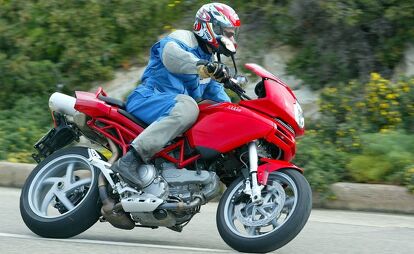













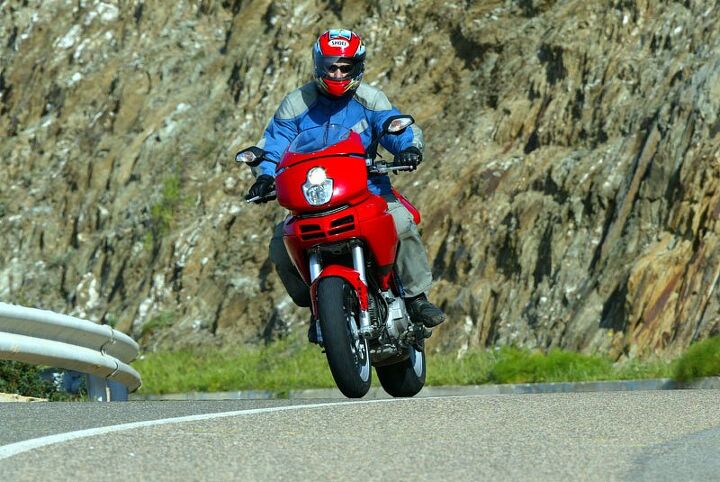



















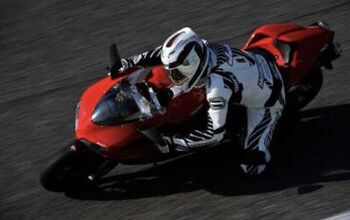
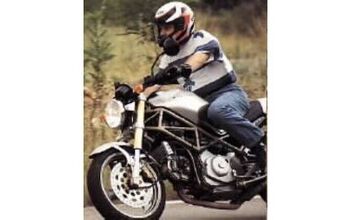


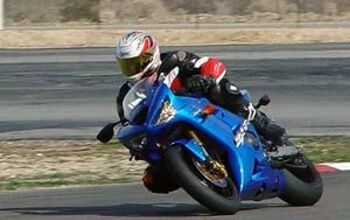











Comments
Join the conversation
I owned an 06 620 and then an 07 1100. Took them cross country 4 times combined. over 35k miles. Their appearance grows on you. More so with the 1100 and its sexy single sided swing arm. I agree with Goose with the vibration (for some reason it was more apparent on the 620) I did over 500 miles of dirt on my last trip out west (7800 combined) and it handled great. I got rid of the 1100 because I'm not sure when I'll have the time to do another cross country trip and didn't want it sitting in my garage, but after trading it for a Monster 1100 evo I came to realize how easy and forgiving the MTS1100 was to ride. I love the looks of my Monster, but damn, It needs much more input from the rider. The front end is so light that it lurches on slow turns if you let off the throttle and the gearing is so tall it doesn't like anything under 4k rpm. My 1100 multi had a full termi exhaust and ecu so I'm sure that had something to do with it as far as being very smooth at low RPMs? I also need to get used to the aggressive riding position of the Monster. At this point, I will probably try to modify the monster to get it to ride more like the MTS1100. Higher bars, steering damper, comfort seat and hopefully one day Termis. Sigh..
She always had a nice rear end..